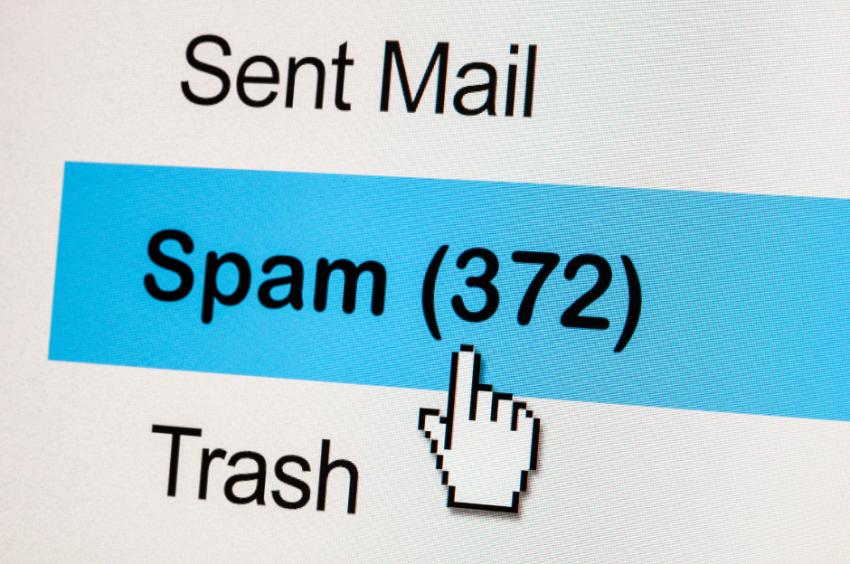Practical tips to improve your email delivery
With deliverability we mean the ability of an email to reach the recipient and not end up in the spam folder, a sort of hellish circle for all those who do email marketing.
Ending up in the spam folder means losing the opportunity to reach a potential customer; we are therefore talking about a crack that creeps into the mail marketing strategy and risks, as a result, to fail to achieve the objectives set.
Studying a perfect marketing strategy is useless if then our mail, by human error or because of spam filters, ends up in junk mail. Having said that, we need to answer two questions: how do we end up in spam? And what should we do to avoid ending up in it?
Let's give some answers.

Why emails end up in spam
An email can end up in spam for several reasons.
- SERVER
First, the server from which the mails start could be compromised because it is used for spamming activities: the mail client's spam filter intervenes and sends the mail into the spam box without too much spinning. It is important to note that mail clients "learn" from users' actions and automate certain operations based on them.
- EMAIL QUALITY
Another factor that can affect deliverability is the quality of the mail. The mailbox is the most intimate space of a person's online presence: invading this space with ambiguous, exclusively commercial or overly insistent messages can lead a potential customer to divert our mail into spam without too much delay.
Specifically, an email with too many capital letters (which on the web is always equivalent to shouting), too many emoticons and too much punctuation is very likely to end up under the hatchet of the spam filter.
- PRIVACY
It is also possible that a user, even if interested in a certain product and service, receives an email without having given explicit consent and signals the email as spam. Beyond compliance with the GDPR, which requires the user's explicit and informed consent to send an email, this is the worst way to do email marketing.
If the IP is blacklisted because it is considered "spammy", the filters could prevent the mail from reaching its destination.
- ENGAGEMENT RATE
Other elements that could affect or even lead to spam are the email opening rate and user interactions with the email. If a user has marked an email as spam, all other emails from the same sender will end up in spam.
How to avoid ending up in spam
We've seen the reasons why our email risks ending up in spam. How, then, can we avoid this?
- SERVER
Let's start from the server: to avoid ending up in spam, it is better to choose SMTP servers or buy services that offer additional guarantees such as DKIM Authentication (links the sending to the reference domain) or filters that use CAN-SPAM rules, so that allow the user to unsubscribe from the mailing list.
To prevent the IP from ending up on a blacklist, it is also a good idea to use services that allow IP rotation.
- EMAIL QUALITY
Important, indeed fundamental, is the already mentioned quality of the mail. Be careful, every mail should be treated with particular care, and the mistakes we talked about before should not be made: neither the subject nor the text should contain excessive punctuation, emoji at will and, above all, they should not be written completely in capitals or use an unattractive commercial language (especially in the subject line).
- LINK
An eye should also be given to the links used in the email, especially if they are shortened with shortener URL systems such as bit.ly, sometimes seen as a fraudulent way to disguise spam links.
- IMAGE
An email with no text and only images can cause non-deliverability.
If you base your email marketing campaign solely on visual communication, you run the risk of ending up in spam. The reason? It's simple: spam filters - which are used to isolate messages considered potentially harmful or intrusive - often do not take graphic files into account and consider emails composed exclusively of images as empty. As a result, they are perceived as suspicious and end up in junk mail.
- PRIVACY
Be careful then to respect people's wishes: if we requested the email to send a newsletter, sending only commercial or sales proposals is the best way to end up in spam. And let's also remember to respect the GDPR and send emails with informed consent. In this regard, the punctual verification of your database, with the elimination of those who do not open the e-mail and e-mails no longer used or deactivated, is a practice to be redo periodically.
Using reliable services that send emails through the SMTP protocol and with IP rotation is the best solution to avoid ending up in spam.
There are also situations that are difficult to correct because they depend on factors such as human error (an email deleted or moved into spam by mistake, etc.) or because of overly strict anti-spam filters. Having said that, it is important to reiterate one concept: a good mail marketing strategy must include attention to detail in every aspect of the mail and respect for people's privacy and sensitivity.
- DATABASE CLEANING
How many times have you cleaned your email lists? You may not know it, but a contact database made up of unused email addresses or people who are not interested in our communications increases the chances of emails ending up in spam.
For this reason, we have implemented a system at Mail Marketing that identifies and isolates so-called "Bad Contact Data", i.e. email contacts that have recorded an error or problem during the sending of a campaign. These are blocked because having bad emails increases the possibility of the entire address book going into spam.
The emails in this list, which we could call a sort of blacklist, end up in a state of suspension, and are not used for sending newsletters unless you decide to restore them.
To check for any incorrect contacts in your address book, simply click on "Clean Database (Bad Contact Data)" once you have logged into your account.
If you would like to verify the success of your campaigns, you can do so by accessing the statistics of individual mailings. How? Go to Sent Campaigns > Actions > Statistics and you will be able to view a report detailing the number of emails actually delivered, the open rate, the unsubscribed rate and the click-through rate within the newsletter. Very useful data to measure the success of your individual communications and understand, through the data on delivered emails, how many of these reach their destination, thus verifying the deliverability.
This brings us to the end of this article. We hope you have found it useful and that you have gained some interesting insights for your email marketing activities.
We also want to remind you that, if you need support in setting up your campaign, you can contact us via the support section on our website or via chat on our Facebook page. Get in contact with us and we'll be happy to help!


